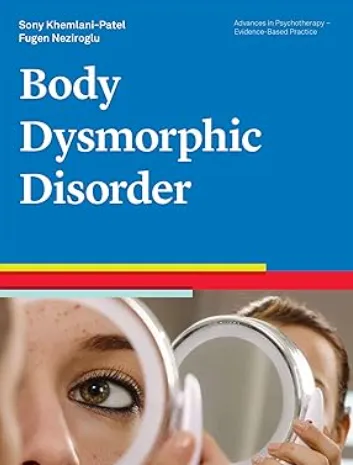Body dysmorphic disorder – Symptoms, Risk Factors
Body dysmorphic disorder – Symptoms, Risk Factors. Body Dysmorphic Disorder (BDD), sometimes referred to as dysmorphophobia or dysmorphia, is a mental health condition in which an individual becomes excessively preoccupied with a perceived defect in their appearance—a defect that is either nonexistent or so minor that it is barely noticeable to others. Unlike everyday concerns about appearance, this disorder consumes a person’s thoughts and disrupts their daily life. Individuals with BDD may spend excessive time scrutinizing themselves in the mirror, meticulously trying to hide the area they believe is flawed by using specific clothing or makeup, or even seeking out repeated cosmetic procedures. This relentless focus on an imagined or exaggerated imperfection can significantly impair personal, academic, and professional aspects of life while also raising the risk of social isolation and even suicidal ideation.
Body Dysmorphic Disorder
This volume provides a user-friendly, evidence-based guide to the diagnosis, phenomenology, etiology, and treatment of body dysmorphic disorder (BDD). New and seasoned clinicians can learn about the foundations of CBT for BDD as well as the rationale and instructions for modifying the approach to meet the differences in symptoms found in this client group. The book explores techniques for treatment engagement, including adjusting therapeutic style.
Recognizing the Symptoms and Impact on Daily Life
Body Dysmorphic Disorder typically emerges during adolescence or young adulthood, when concerns about physical appearance are especially pronounced. The hallmark of BDD is an unyielding preoccupation with one or two perceived flaws, which might involve any aspect of physical appearance—from the shape of the nose or the texture of the skin to the size of the eyes or the alignment of the teeth. (Hollow Cheeks: Causes, Remedies & Makeup Tips. Fortunately, dermal fillers can replenish lost skin volume, restore a natural youthful curve to your cheeks and subtly enhance the natural contours of your face.)
This fixation often leads to behaviors that interfere with daily functioning. Many individuals find themselves caught in a cycle of incessant mirror checking, spending long hours searching for the “right” angle, or becoming overly concerned with how they appear in photographs. The anxiety surrounding their appearance often results in a persistent avoidance of social situations and public exposure, which, over time, can cause significant deterioration in personal relationships, academic performance, and professional opportunities. In severe cases, the ongoing distress and isolation experienced by those with BDD can lead to depression and a high risk of suicidal behavior. The relentless internal dialogue about perceived imperfections not only diminishes self-esteem but also makes it exceedingly difficult to maintain a healthy and balanced lifestyle.
Symptoms of Body Dysmorphic Disorder
Are you concerned that you or someone you know may suffer from this condition? If so, it helps to know the key signs. Some of the most common symptoms of BDD include
- Worrying excessively about a specific part of your body (especially your face)
- Strongly believing that you have a physical flaw that makes you unattractive or deformed
- Constantly comparing your appearance to others
- Believing that others take special notice of your appearance or mock you about it behind your back
- Looking at yourself in the mirror excessively or avoiding mirrors altogether
- Engaging in behaviors intended to hide or fix the perceived flaw (e.g. grooming or skin picking)
- Trying to hide flaws through clothing, styling, or cosmetics
- Frequently seeking reassurance and positive affirmation about your appearance from others
- Avoiding social situations where they fear others will judge your appearance
Left untreated, the symptoms of BDD can affect every aspect of a person’s daily life. Their preoccupation with their appearance can lead to excessive, intrusive thoughts, as well as repetitive, time-consuming behaviors. This can impact their work, social interactions, and personal relationships.

In most cases, people with BDD will excessively focus on one or more parts of their bodies. While this part may change over time, some of the most common features to scrutinize include
- Face (nose shape/size, complexion, acne, wrinkles, blemishes)
- Skin and veins
- Hair (appearance, color, texture, thinning, baldness)
- Breast size
- Muscle size/tone
- Genitalia
Thought patterns in individuals affected with BDD can vary. Some people may recognize that their thought patterns are excessive or untrue, while others are completely convinced that their beliefs are valid. The more certain they feel that their negative body image aligns with reality, the more distress they’re likely to experience in their lives.
Risk Factors for BDD
Typically, the symptoms of BDD begin to develop in the early teenage years. While anyone can develop this condition, certain risk factors can increase an individual’s likelihood of developing or triggering it. These include:
- Being related (by blood) to someone who also suffers from BDD or obsessive-compulsive disorder (OCD)
- Having a perfectionist personality
- Having a chemical imbalance in the brain
- Going through a negative life experience in childhood (e.g. bullying, neglect, or abuse)
- Feeling especially vulnerable to societal pressures and expectations
- Suffering from a co-occurring mental health condition, such as anxiety or depression
There is no definite cause of BDD, though the above factors can put someone at a higher risk of it. In some cases, people with BDD may also suffer from OCD, generalized anxiety disorder, or an eating disorder.
Diagnosis and the Path to Recovery
Diagnosing Body Dysmorphic Disorder involves a careful and comprehensive evaluation by a mental health professional. The process typically includes a detailed exploration of the patient’s personal history, observed behaviors, and the impact of these behaviors on daily life. Clinicians use established diagnostic criteria from sources such as the DSM-5 to differentiate BDD from other mental health conditions that might exhibit similar symptoms, such as obsessive-compulsive disorder or social anxiety disorder. Once a diagnosis is confirmed, treatment generally focuses on a combination of psychotherapeutic and pharmacological interventions. Cognitive-behavioral therapy (CBT) has proven especially effective; it helps patients identify and challenge the distorted beliefs about their appearance while developing healthier patterns of thought and behavior. In many cases, antidepressants are also prescribed to help mitigate the depressive and anxious symptoms that frequently accompany the disorder. This integrated approach is designed to gradually reduce the patient’s preoccupation with their perceived flaws and improve overall quality of life. It is essential for treatment to be personalized, as the severity and nature of BDD can vary significantly from one individual to another. Early intervention plays a crucial role in preventing the condition from becoming chronic and more deeply entrenched.
The Broader Implications on Social and Emotional Well-Being
The repercussions of Body Dysmorphic Disorder extend far beyond issues of appearance. The persistent fixation on perceived bodily imperfections can result in a profound sense of shame and self-doubt, often leading individuals to withdraw from social interactions and avoid situations where their appearance might be scrutinized. This social isolation further compounds feelings of loneliness and inadequacy, creating a vicious cycle of negative self-perception and emotional distress. Many people with BDD experience such a high level of internal conflict and despair that they may turn to repeated cosmetic interventions, yet no matter how many procedures they undergo, the dissatisfaction remains unresolved. The relentless cycle of self-criticism and the continuous search for physical perfection can significantly hamper both personal and professional development, ultimately undermining one’s overall mental and emotional well-being.
Treatment for BDD
A mental health professional can perform a psychological evaluation to determine if an individual is suffering from BDD. In addition to this evaluation, the diagnosis will also be based on the person’s history (personal, family, and social) as well as the signs and symptoms they’re exhibiting.
Upon diagnosis, treatment for BDD often includes a combination of cognitive behavioral therapy (CBT) and medication, including selective serotonin reuptake inhibitors (SSRIs).
Through CBT, people with BDD can understand how their negative thoughts and behaviors negatively impact their lives. They’ll also learn how to challenge their perception of their body image and engage in other, more affirming thought patterns. In time, they will discover healthy ways to manage their self-critiquing urges, gradually reducing the amount of time they spend checking the mirror, seeking reassurance, or avoiding others.
Hair Splinter: What It Is & How to Remove It Fast. Hair splinters are the result of hair fragments penetrating into non-hair-bearing areas of skin. Once considered a rare occupational hazard, it is likely that hair splinters are underreported. Hair splinters can be asymptomatic or quite painful. If left untreated, they may lead to complications, such as pilonidal sinus and foreign body granuloma. Hair splinters have most commonly been reported in barbers, hairdressers, sheep shearers, and pet owners.






